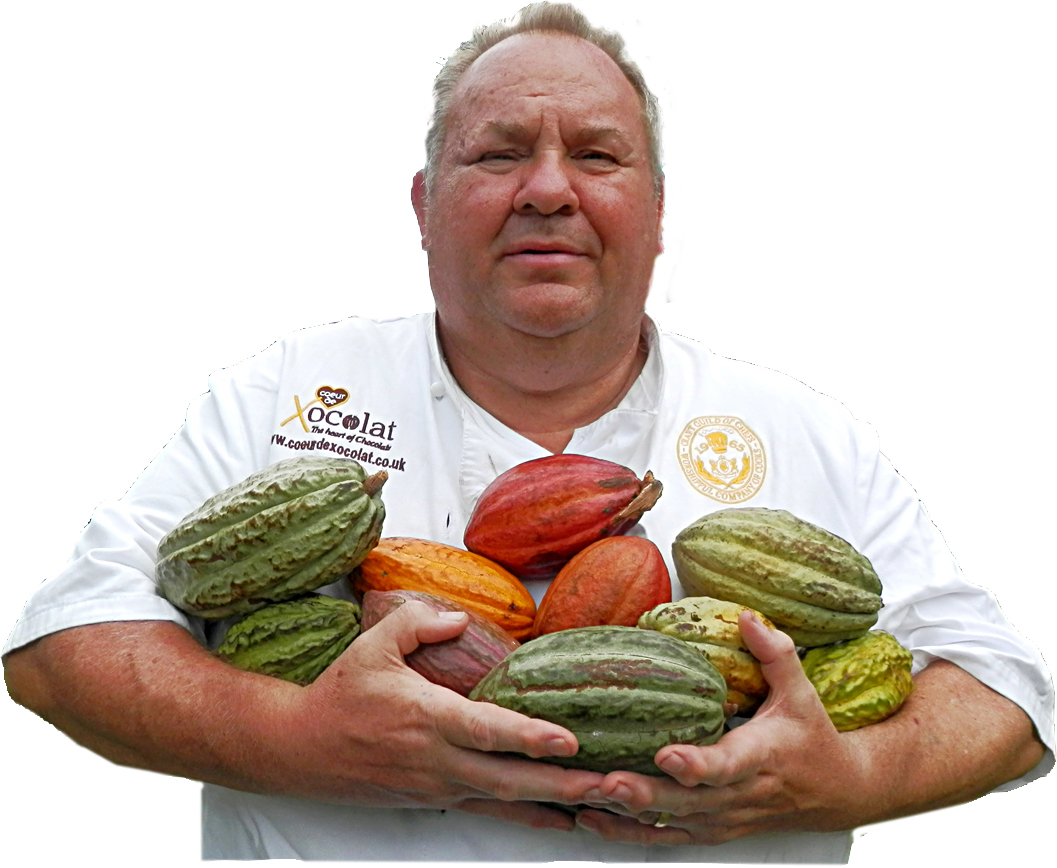
Exploring Cocoa, Community, and Change
For more than twenty years, I have travelled to Haiti, but only recently did I begin to explore the country as a cocoa origin. My journey brought me face-to-face with the people, places, and partnerships that are redefining what Haitian cocoa means to the world. This Chocolate Safari® case study highlights a charity-focused perspective on how cocoa farming in Haiti intertwines with livelihoods, sustainability, and flavour.
Meeting the Pioneers of Haitian Cocoa
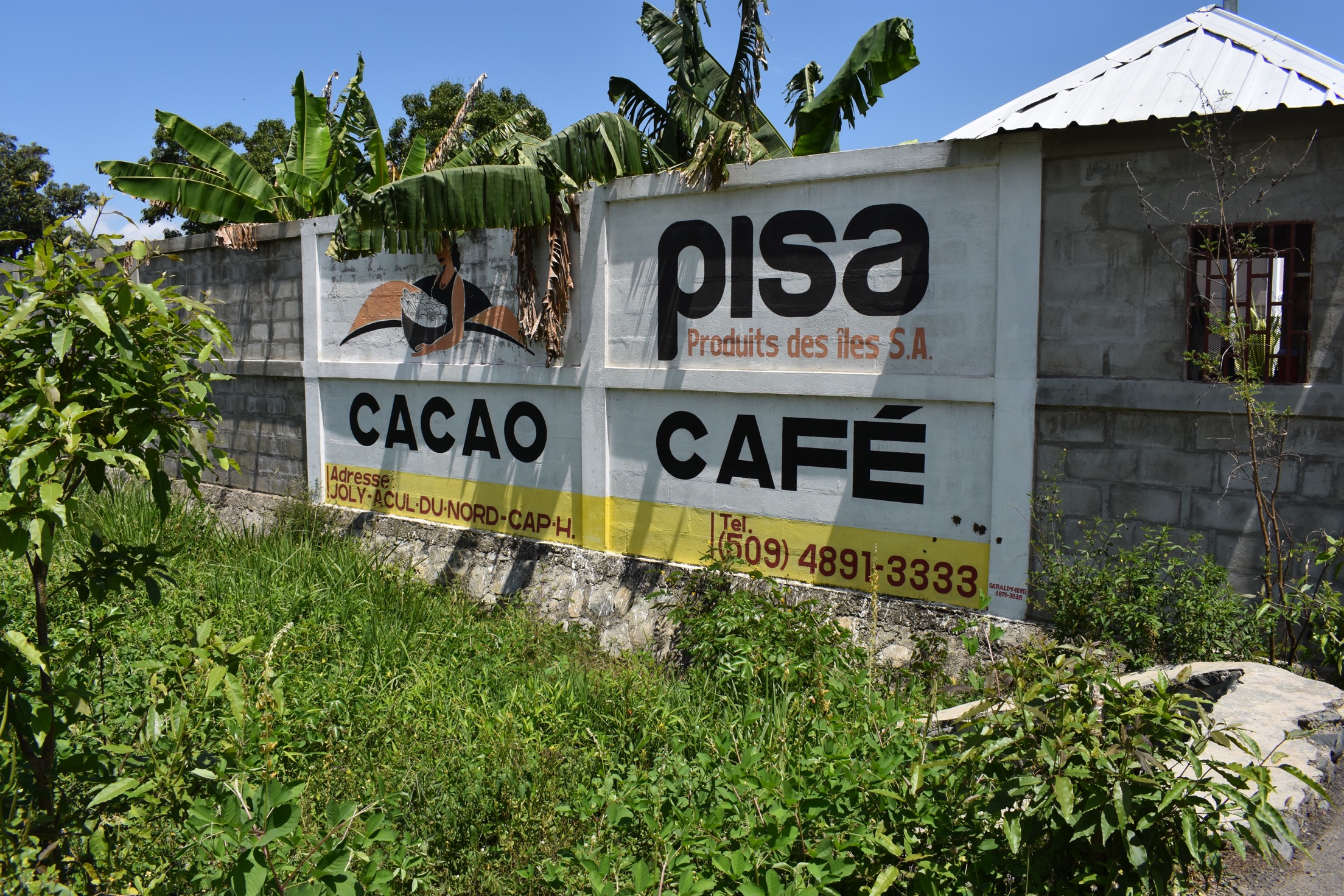
On a scheduled visit to Cap-Haïtien, I took time to visit two important sites: Produits des Îles SA (PISA), a farmer-focused cocoa processing centre in Acul-du-Nord, and Askanya, a small award-winning bean-to-bar
chocolate factory.
PISA began in 2014, founded by the DuFort family, with the aim of enabling local cocoa farmers to appreciate the true value of their crop and re-establish Haiti’s reputation for fine cocoa. Today, they work with almost 1,500 producers, managing 974 hectares of organic-certified land. Remarkably, one-third of these producers are women, giving cocoa a strong role in supporting female entrepreneurship and household stability.
A Day on Safari in Northern Haiti
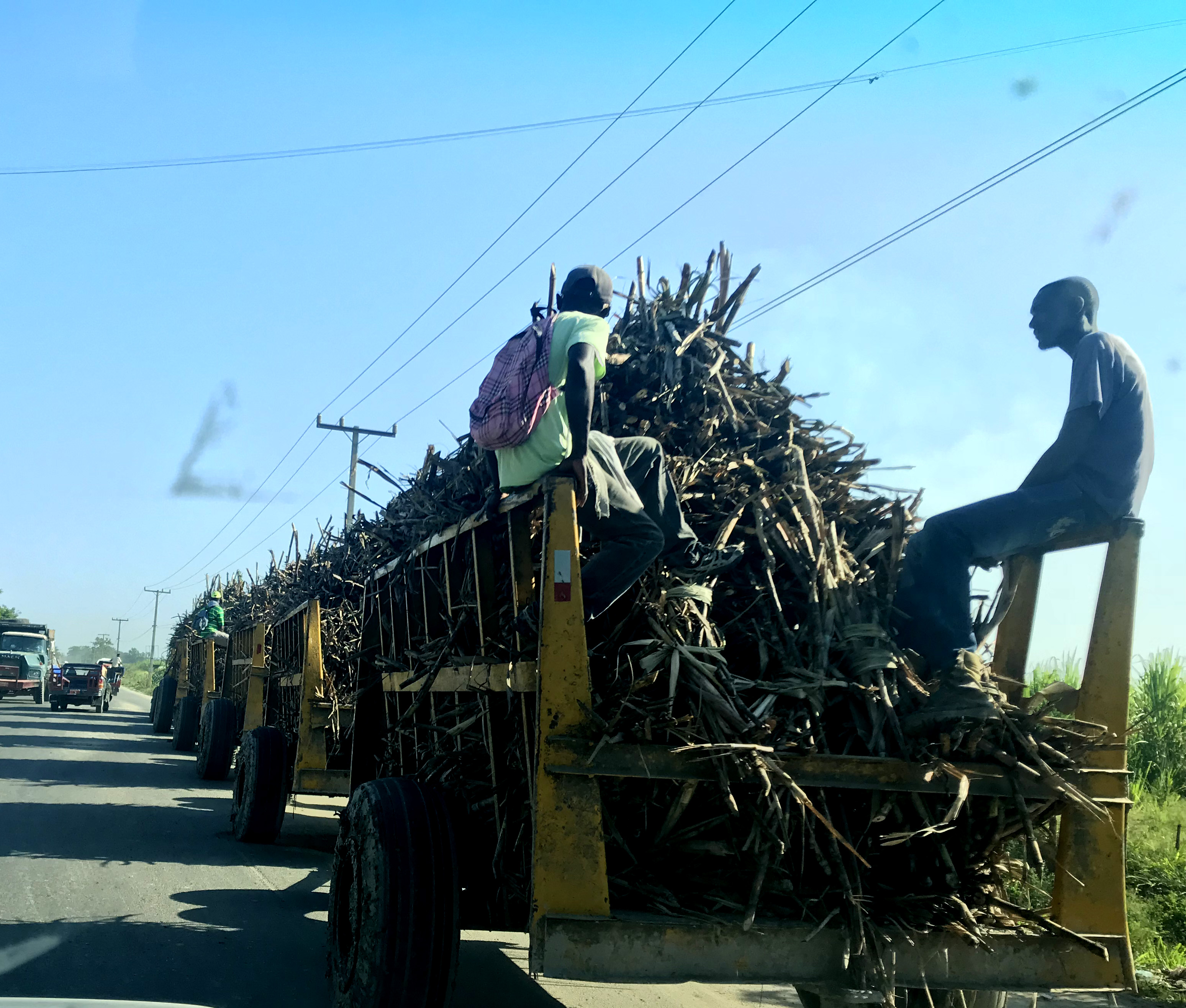
I woke to the sounds of cockerels and Brad, the proud peacock at my lodging, heralding the dawn of a new day. After a quick breakfast, I joined my driver for a 45-minute journey through bustling streets lined with vendors. Along the way, I passed the “Cane Train,” a convoy of trucks carrying sugarcane waste destined for Clarin, Haiti’s beloved local spirit. These scenes were a stark reminder of the economic challenges the country faces, but also of its resilience and ingenuity.
On arrival at PISA, the first sensation was unforgettable: the sharp, acidic aroma of fermenting cocoa beans filling the warm Caribbean air. Sheets of tarpaulin stretched across the yard, with workers carefully spreading cocoa beans beneath the sun. I was met by Aline Etlicher, the dedicated French project manager overseeing operations, who guided me through the centre.
From Pod to Bean: The PISA Model
Unlike the traditional system where farmers sell dried beans at low prices to large companies, PISA pays farmers twice the market rate by purchasing wet beans straight from the pod.
Collection: Six days a week, PISA trucks collect beans directly from farmers, who are paid by bowl volume.
Fermentation: The beans are placed into large wooden boxes and carefully monitored for 160 hours, rotated across three stages to ensure even fermentation.
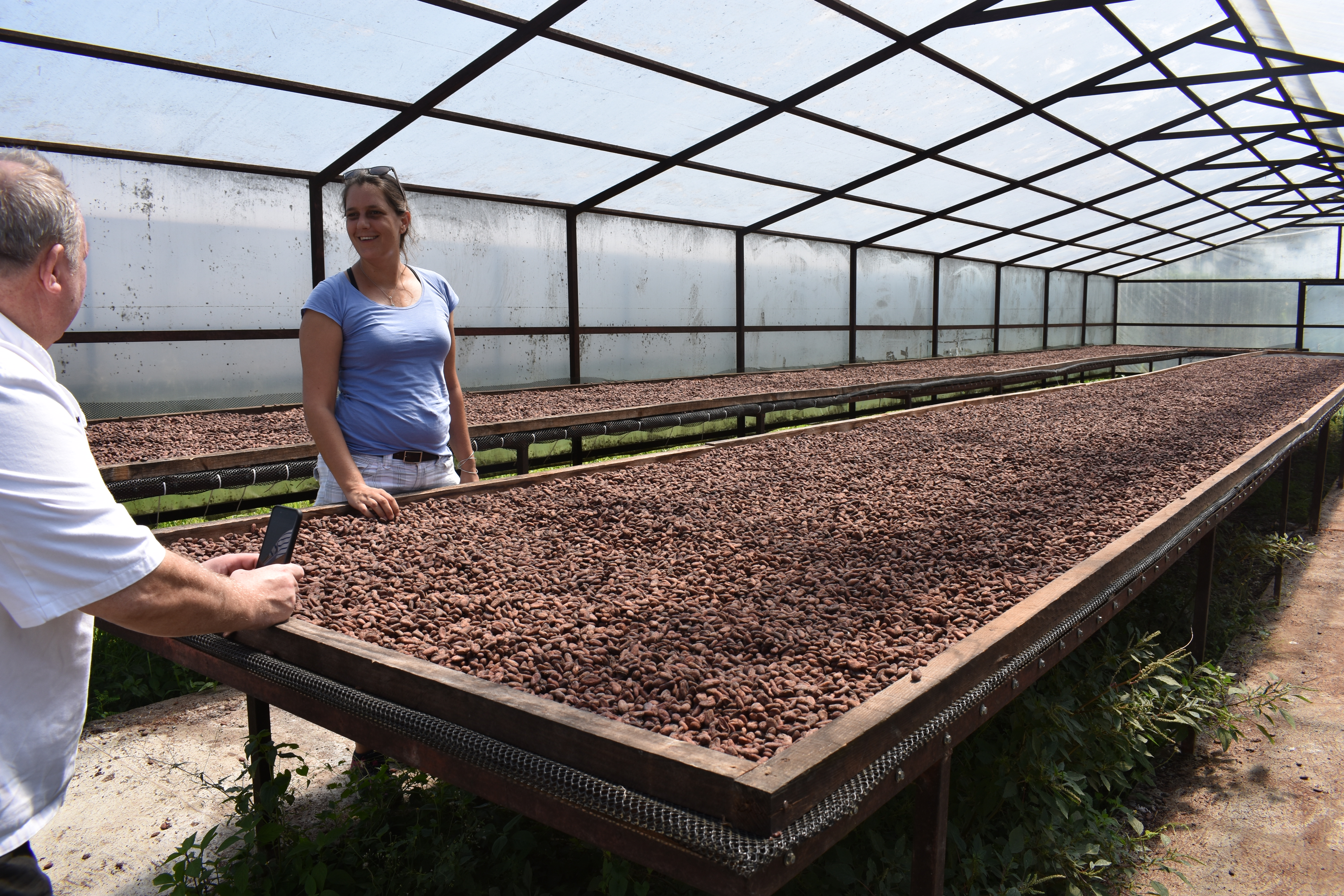
Drying: Following fermentation, beans are dried for 5–7 days on open patios and in air-circulation tunnels until they reach a stable 6.5–7% humidity.
Cleaning & Quality Control: Dust and stones are removed via gravity tables. Beans are then tested using the cut test and organoleptic evaluation, ensuring consistent fine-flavour quality.
This direct-trade approach empowers farmers, discourages deforestation (by making cocoa trees more valuable than charcoal), and strengthens Haiti’s fragile ecosystem. With only 2% of Haiti’s forest cover remaining, sustainable cocoa cultivation provides critical shade, soil protection, and biodiversity benefits.
Women, Youth, and the Future of Haitian Cocoa
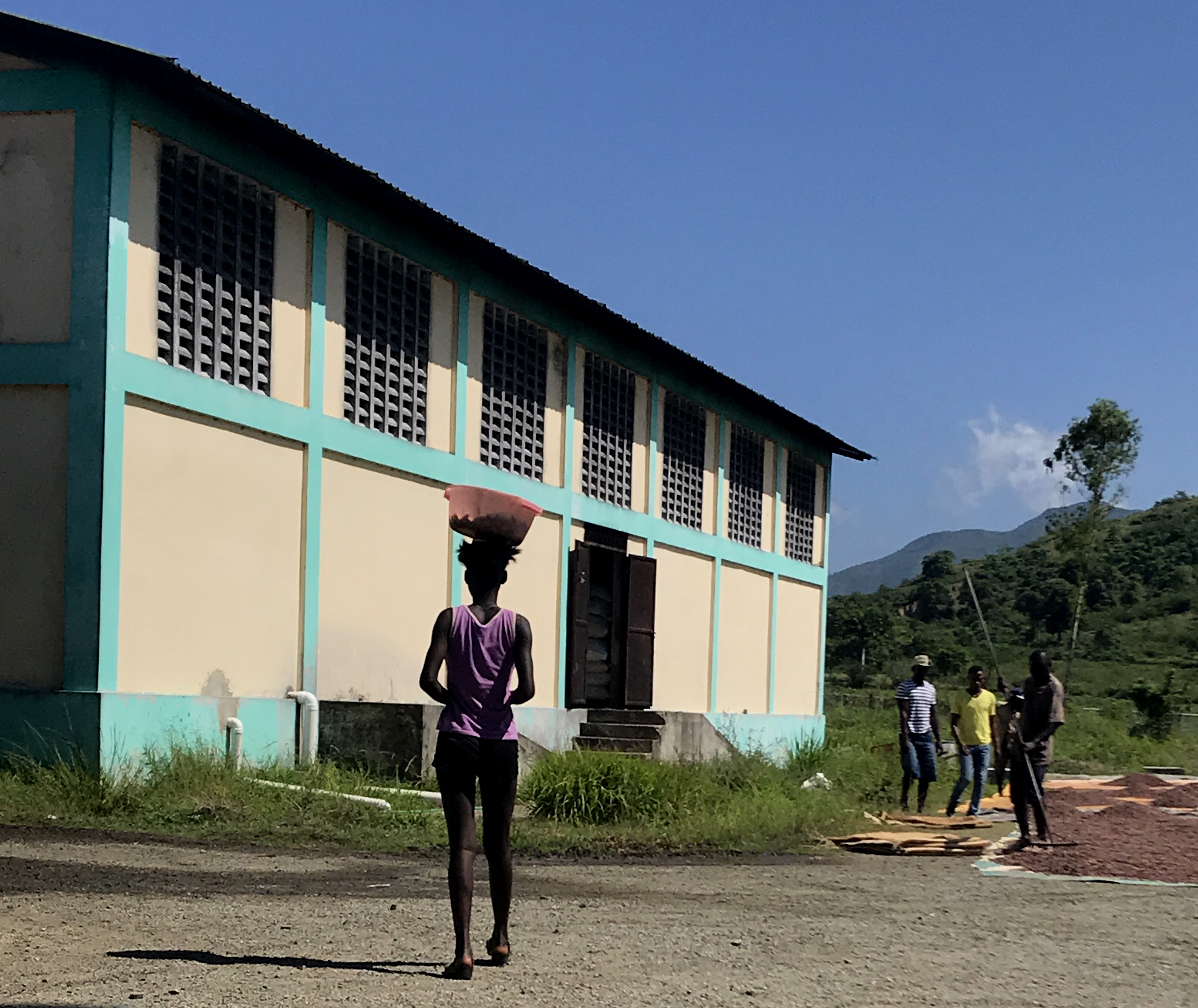
One of the most powerful moments of my visit was seeing a young girl arrive at PISA carrying a bowl of cocoa beans to sell. It was a small act, but symbolic of the new opportunities cocoa creates for women and families. For many, this represents a path away from the unsustainable charcoal trade, towards a future rooted in resilience and value-added agriculture.
Flavour Discovery: Haiti in a Bar
After the processing tour, I was given a sneak preview of the onsite chocolate production. The flavour was unlike anything I had expected bright, fruity, and layered with complexity.
One of my favourite ways to experience Haitian cocoa today is through Kokoa Collection’s 75% Haiti bar.
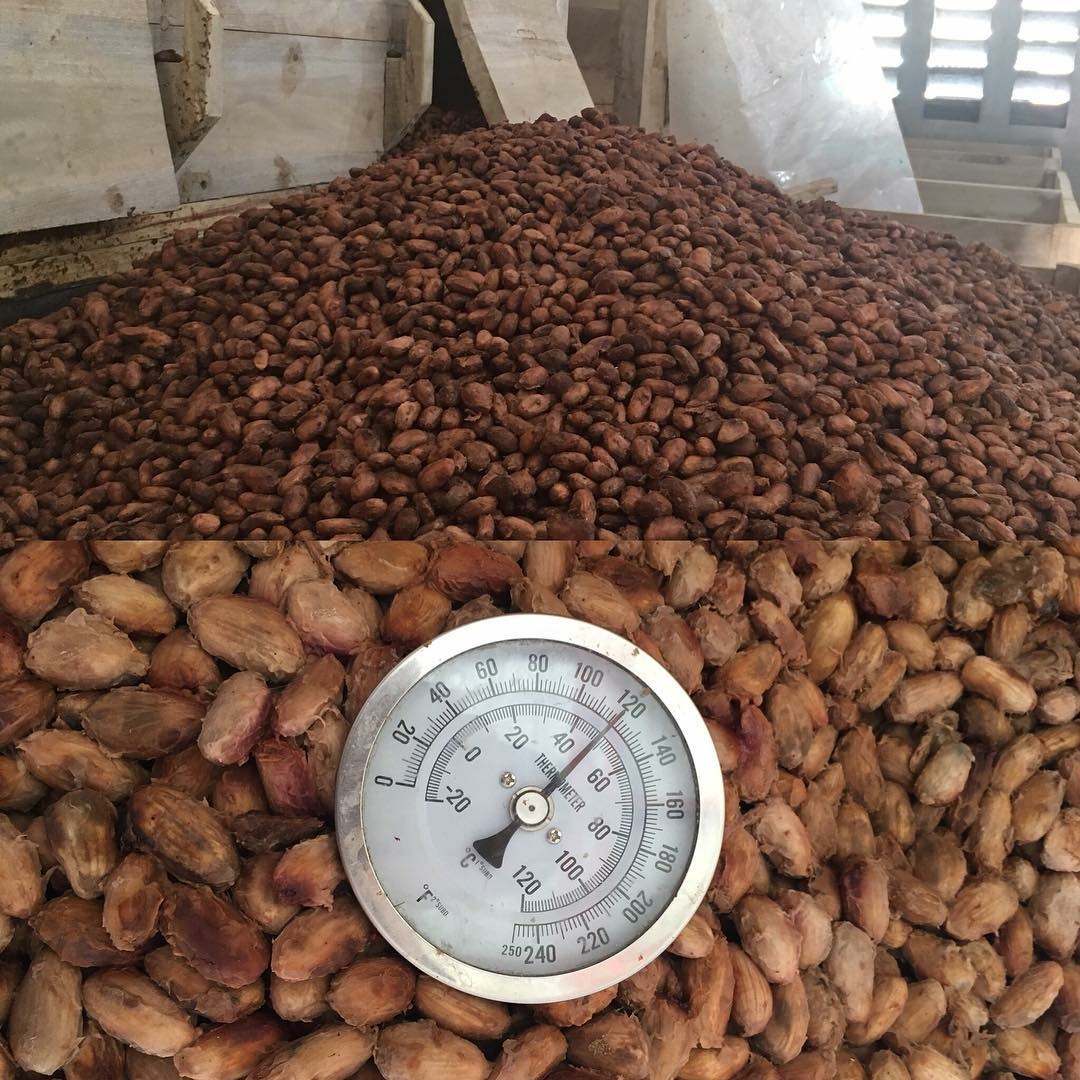
Tasting Notes
Aroma: Floral honey and red fruit.
Palate: Plum, raisin, yellow fruits, citrus, and mango.
Finish: Tannic red wine depth with subtle rum-like notes.
Origin: Haiti
Variety: Trinitario
Certifications: Organic, ethically and sustainably traded.
This fine-flavour profile reflects the dedication of farmers and processors to quality, as well as Haiti’s unique terroir.
A Taste of Haiti: Chocolate & Barbancourt Rum
No Chocolate Safari® would be complete without exploring pairings, and in Haiti one natural partner stands out:
Rhum Barbancourt. Distilled from pure sugarcane juice rather than molasses, Barbancourt is Haiti’s most celebrated spirit, with a heritage stretching back to 1862. Its layered flavour profiles from the bright, grassy notes of the 3-Star (aged 4 years) to the deep, oaky richness of the 15-year Estate Reserve harmonise beautifully with the complexity of Haitian cocoa.
Kokoa Collection 75% Haiti with Barbancourt 5-Star (8 years): The bar’s notes of plum, raisin, and citrus marry with the rum’s honeyed vanilla and toasted oak, creating a balance of fruit and warmth.
Askanya Milk Chocolate with Barbancourt White: The creamy texture of the chocolate softens the youthful rum’s grassy cane character, highlighting caramel and tropical fruit notes.
This pairing is more than indulgence; it’s an expression of Haitian terroir, where land, labour, and tradition come together in two of the country’s finest products. Enjoyed thoughtfully, it becomes both a cultural journey and a celebration of resilience.
Impact Beyond Flavour
For charities, NGOs, and development organisations, the Haitian cocoa sector demonstrates a powerful model of agriculture-led poverty reduction:
Fair Pay: Farmers earn double the income compared to traditional systems.
Sustainability: Cocoa farming protects remaining forests and reduces pressure on charcoal production.
Empowerment: With women making up a third of producers, cocoa supports gender equity and household resilience.
Community Health: Value-added agriculture creates opportunities beyond subsistence, funding education, healthcare, and local investment.
Conclusion: Haiti’s Cocoa Renaissance
This Chocolate Safari® revealed Haiti as more than a nation of hardship and resilience it is a land of opportunity, innovation, and fine-flavour cocoa. By linking farmers, processors, and chocolate makers, projects like PISA and Askanya are helping Haiti reclaim its place on the world map of fine chocolate origins.
For those who care about ethical sourcing, sustainability, and empowering communities, Haitian cocoa is more than just a commodity it is a lifeline, a story, and a flavour worth savouring.
